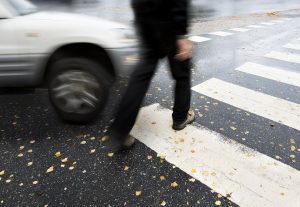In 1993, the Tri-State Transportation Campaign was formed to address economic and environmental issues caused by the use of automobiles in our area. Since then, the non-profit has worked to reduce car dependency in New York, Connecticut and New Jersey. Initiatives to increase investment in public transportation, bicycle and pedestrian safety have resulted in research to find danger zones, but when it comes to pedestrian accidents, one highway over all the others has consistently proven to be the most dangerous road in New Jersey. Do you know what road that is?
Why is Route 130 the Most Dangerous Road in New Jersey?
For the past five years, two dozen people have died while trying to cross Route 130. This highway runs from Salem County to Middlesex County, and has become one of the deadliest thoroughfares in the entire state. It has taken the top spot on the Tri-State Transportation Campaign’s list of deadliest roads for pedestrians six years running, but officials want to fix this public safety problem.
When Route 130 makes its way through Burlington County, it encounters businesses, schools and bus stops. This makes it a busy place for pedestrians, but a lack of sidewalks and crosswalks coupled with higher speed limits make walking in the area unsafe. According to the AAA Foundation for Traffic Safety, if a pedestrian is hit by a vehicle going 45 mph, they have a 52 percent chance of being killed, and that percentage jumps to 83 percent if the victim is elderly.
Is There a Way to Fix the Most Dangerous Road in New Jersey?
Initiatives all over the state are trying jumpstart safety measures on this particularly dangerous road. A campaign from Burlington City High School and Senator Diane Allen aims to give cities authority to permanently reduce the speed limits in areas near schools. In the meantime, schools in that area are starting at 8 a.m. so students will have more light while travelling to classes. However, meaningful changes are hard to implement due to Route 130 being a state-run road.
This leaves lawsuits as a measure for victims of dangerous conditions on Route 130. Not only can a lawsuit help compensate families for their loss, it can also spur change. Drawing attention to the defects in the roadway’s design, and holding public officials accountable can ignite the flames of change. That means calling an attorney after a pedestrian accident is not only critical for victims, but it is vital to public safety as well.

